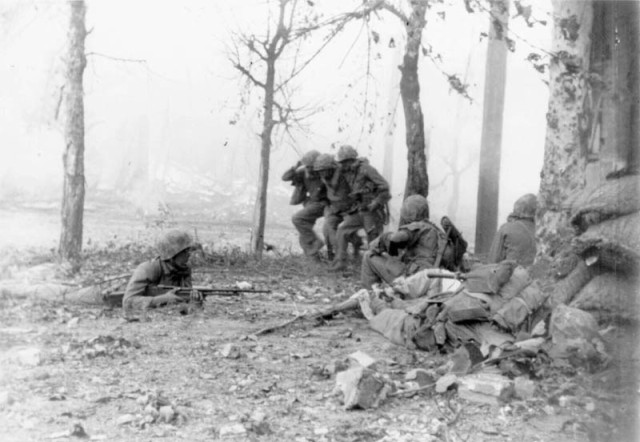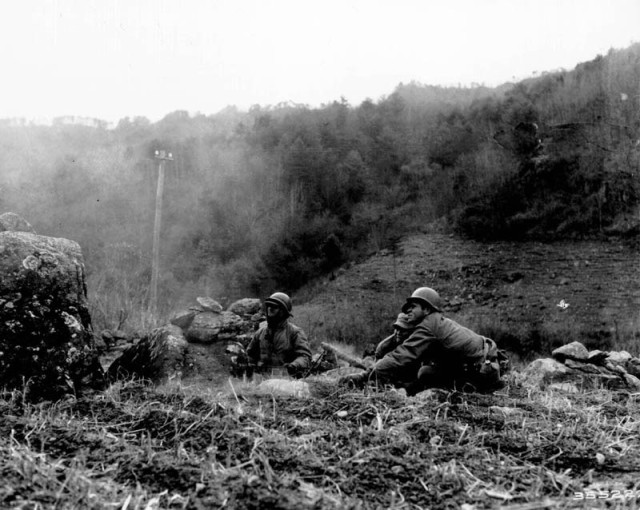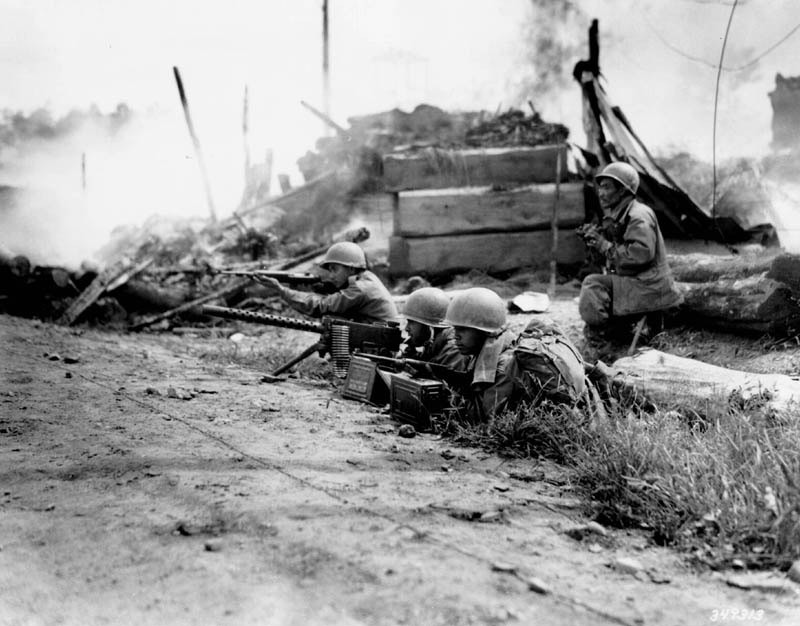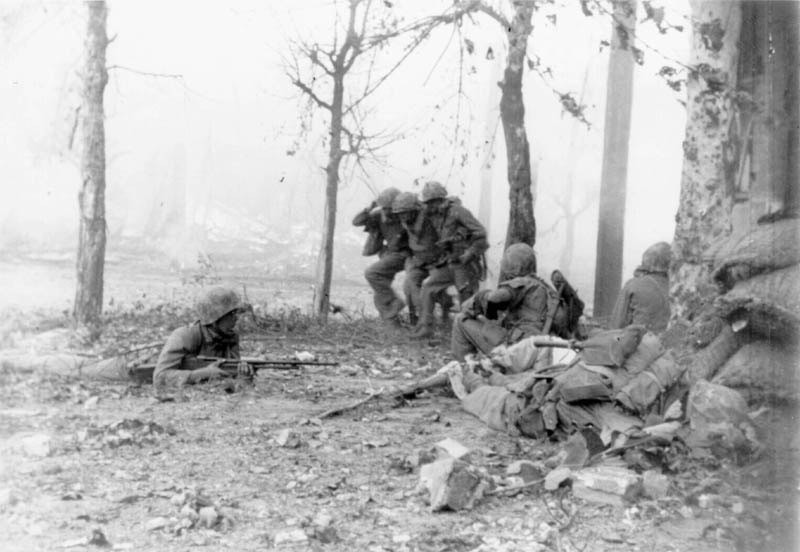By1950, five years had passed since the U.S. Army achieved victory during World War II. The Army had a major drawdown and cut troop units and staff. Most of the remaining junior personnel had not served in World War II nor did the draftees have actual combat experience. June 25, 1950 was a picture perfect summer day, the sun was shining, spirits were high and Americans were preparing for a big installation softball event. It was a great day to leave the office behind, enjoy life, and relish downtime even if you were stationed in Korea.
June 25 was a day for great operational security practices, and a busy day for unwitting others. Motor pools were emptied covertly and troops by the masses trudged south. The North Korean invasion of South Korea was just about to commence and lemonade was still being poured at the big Post softball event.
There was no warning, just complete surprise. The U.S. ArmyAca,!a,,cs focus was on softball. An Embassy Marine driving an orange painted jeep near the U.S. Embassy compound noticed a plane in the morning air flying lazy circles. He waved, and the North Korean Yak came in for a strafing run. The Marine barely survived, but the jeep was an early combat loss.
Even with the recent memories of 1941 Pearl Harbor still fresh in the minds of military and civilian personnel serving overseas, the obvious question was how yet another surprise attack could happen again. The better question is how this attack could have been prevented.
North KoreaAca,!a,,cs use of intelligence and surveillance served them well in the attack of an organization not focused on operational security (OPSEC) in all working conditions, to include fun. The need to observe and implement good OPSEC practices is evident, and could have saved lives.
Our lack of OPSEC practices and the North KoreanAca,!a,,cs good use of OPSEC and intelligence information helped our enemies attack the U.S. military. Lesson learned' When we lower our guard and our OPSEC practices, we create and expose our vulnerabilities for our enemies to exploit. Protecting our country, our servicemen and women and their families begins with good OPSEC behaviors.
June 25 holds a special place in the hearts and minds of security and intelligence professionals. For us, we see an intelligence failure that cost lives. There were no indications and no warnings presented to the command leadership that could have prevented the attack or at least allowed an evacuation of the area to save lives.
Then, there was little tracking because Aca,!a,,cwe were the victorious Army of World War II; who would dare attack us'Aca,!a,,c Security stood at a readiness level best described as, Aca,!EoeWhen we need to, we will upgrade to meet the threat.Aca,!a,,c People believed that when the time comes, we will be ready, so letAca,!a,,cs enjoy the day.
It is so easy to sit back 60 years later and see the errors in the ways of those professionals at the time. Even so, this assessment would do little to provide meaningful value to us today. Instead, I like to sit back and compare the intelligence and security operations of June 25, 1950 to today. We are better prepared. We have implemented a more robust and fine-tuned intelligence system.
However, first we must ensure that we maintain our focus and support the overall command mission. Through improved OPSEC behaviors and practices, we decrease opportunities for our enemies to exploit our perceived weaknesses.
As our military navigates its way through our present conflicts abroad, I challenge all of us to remember the valuable lessons of the past and move on with the new security requirements of daily life on the home front.
Bottom line- we must ensure we stay informed with the best intelligence information available and be vigilant concerning any security breaches, or imperfections. Minor security issues will most always exist; however, I charge our military communities to think of how we can improve our security practices. This is a group effort that requires each and every one of us to adhere to OPSEC with saving lives in mind.
We are in the same military community, and serve the same country, the United States of America. If we see problems with the regulations, we have a responsibility to raise these issues through the chain of command and report it to Department of the Army Headquarters. We have to balance security, risk, and mission accomplishment. Too much security can hamper mission accomplishment, just as too little can destroy a mission and possibly cause loss of life.
Having served seven years in Korea, both active duty and as a civilian, I have had the opportunity to see the history through the eyes of the people who were there that day. The 50-year anniversary of the Korean War brought the veterans of 1950 back to Korea. My conversations with them and the U.S. Forces Korea Historian Office, highly energized me to be a good professional in the security realm of operations at the brigade and headquarters levels. At any level, good security practices are essential.
I ask that as June 25 approaches, you will reflect on where our security capabilities were 60 years ago compared to the technology and security and intelligence operations we engage in today. As you reflect, perhaps you may find where improvements can be made within your organization and its operations.
Be informed, be safe, be secure!
James Lint (U.S. Marine Corps and U.S. Army, Retired) is currently the G2 of U.S. Army Communications-Electronics Command at Aberdeen Proving Grounds. He has 34 years of Military Intelligence experience, covering the USMC, U.S. Army, contractor, and civil service.






Social Sharing